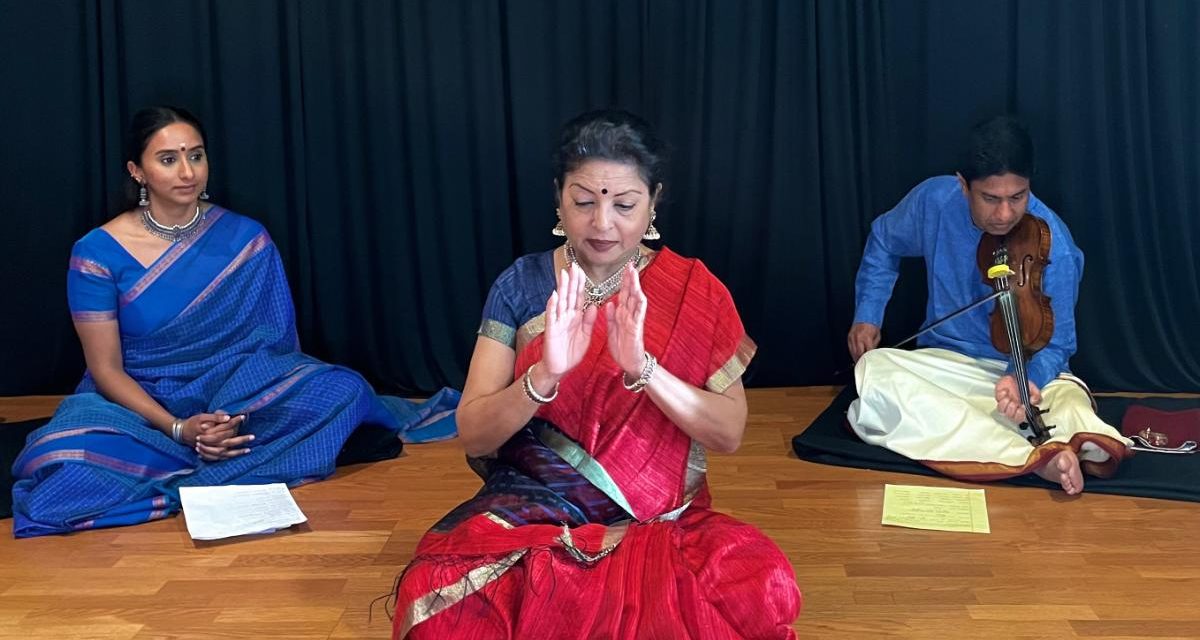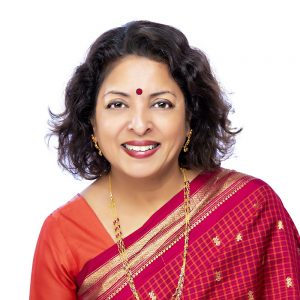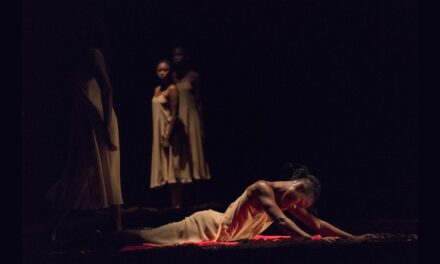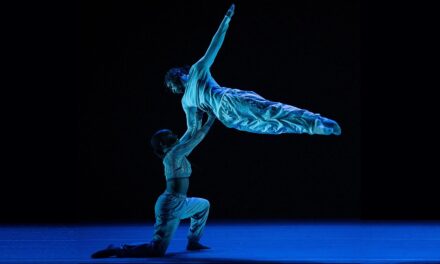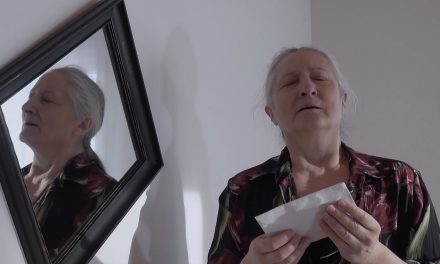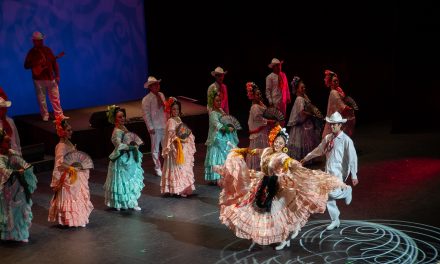The is nothing more rewarding or humbling than finding oneself in the presence of, or witnessing the work of a great artist. I had that pleasure on Saturday, February 12, 2022 as I sat at my computer and witnessed Ramya Harishankar perform her Symphony of Emotions produced online by Dhvani Performing Arts Society of Central Ohio – an organization which is about the performing arts of India with an emphasis on Carnatic music and the cultural heritage and performing arts of South India.
Born and raised in India, Harishankar is a performer and teacher of Bharata Natyam (Bharatanatyam), one of the oldest forms of Indian dance. Bharata means India and Natyam is theater. Now based in Irvine, California, Harishankar is the Founder and Artistic Director of Arpana Dance Company which she founded in 1985 shortly after moving to the United States.
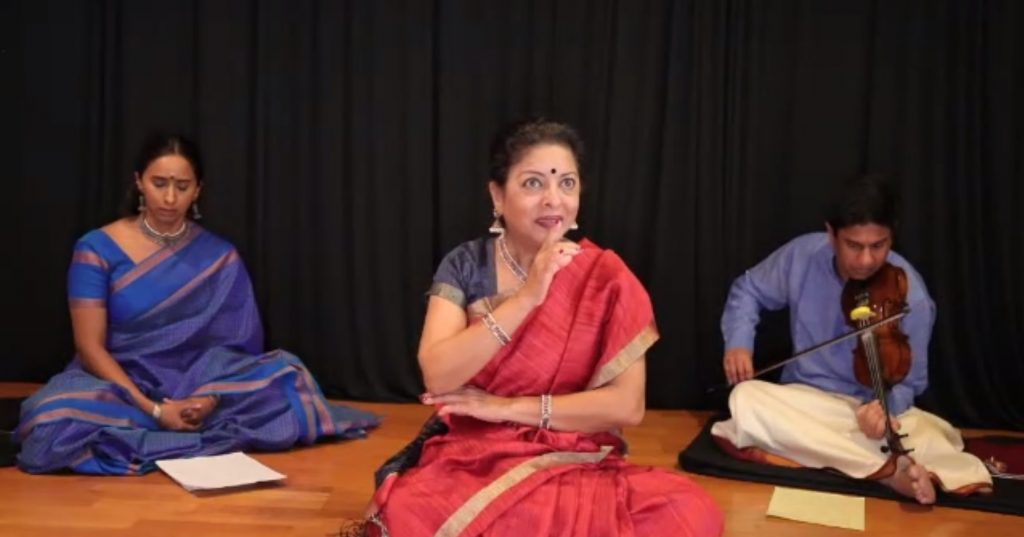
Arpana Dance Company – (L to R) Visalini Sundaram, Ramya Harishankar, Kiran Athreya in “Symphony of Emotions” – Screenshot by LADC
Performing Symphony of Emotions took extra practice for Harishankar because Bharatanatyam is a dance form normally performed while moving about the stage. Because this performance was to be presented on Zoom, she and Shankar Ramachandran, a member of Dhvani who hosted the performance, agreed recording the event would be best served if Harishankar and her two accompanists remained in one place. Harishankar took her audience through almost every imaginable emotion while sitting cross-legged in one spot the entire time. Her visualizations and storytelling occurred solely through the use of her facial expressions, head movements, along with arm, torso and hand gestures.
In her initial email to me Harishankar described Symphony of Emotions as “a ‘chamber concert’ of abhinaya/interpretive dance.” The performance consisted of six very distinct works accompanied by her singing, the solo voice rendered by her dance student and talented singer Visalini Sundaram, and music performed by the very expressive violinist, Kiran Athreya.
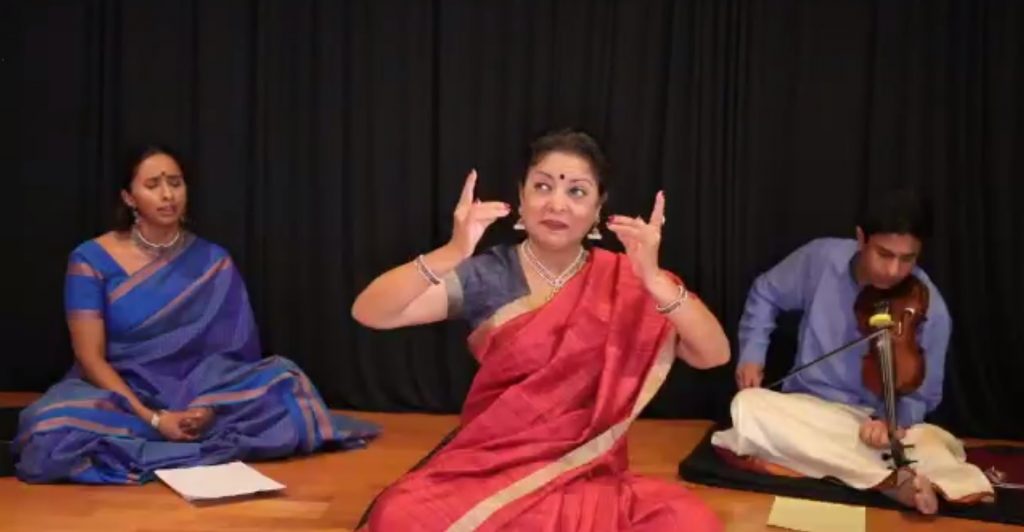
Arpana Dance Company – (L to R) Visalini Sundaram, Ramya Harishankar, Kiran Athreya in “Symphony of Emotions” – Screenshot by LADC
Navarasa shloka included verses from Soundarya Lahari (waves of beauty) by Adi Shankara (8th century) in Sanskrit in praise of the Goddess Parvati. The Ragamalika or garland of ragas included 9 different emotions: Shringara/love, Bhibhatsa/distain, Roudra/anger, Ascharya/wonderment, Bhayanaka/fear, Veerya/valor, Hasya/laughter, Karunya/compassion, and Shanti/peace!
To watch Harishankar’s facial expressions as well as the emotions emanating from within shift at will, was nothing short of amazing. All this took place with the beautiful singing by Sundaram, whose vocal inflections shifted as seamlessly as Harishankar’s movements.
Harishankar sang the lyrics of the second work titled Yarikahilum Bayama, a Tamil padam credited to Subbaram lyer (19th Century), Ragam Begada/Talam Misra Chapu. The piece was about a direct and outspoken woman who is unmoved by the gossipers of her town. Watching her face and body rotate between surprise and disdain at what she was hearing was as much fun as it was astonishing.
Maiya Mori – Hindi bhajan by Surdas (16 century), Rag Misra Maund/Tal Teen. This was a conversation between a woman and her foster son, Krishna. Again, Harishankar sang as she expressed love and humor between these two characters.
Chikavane – Kannada composition by Purandaradasa (16th century), Ragamalika/Talam Adi expressed surprise and cunning. A woman finds Krishna “incorrigible yet, irresistible”.
Vadarakka pove – Telugu padam by Kshtreyya (17th century), Ragam – Khamboji/Talam – Triputa told the story of a woman whose lover left her long ago but returns with the hope of rekindling their love. She, however, has moved on and, although flattered and somewhat tempted, rejects his advances.
Here too, I was amazed to watch the subtle movements of Harishankar’s face, eyes, an eyebrows, a tilt of her head or a simple hand gesture reveal such inner and clashing emotions.
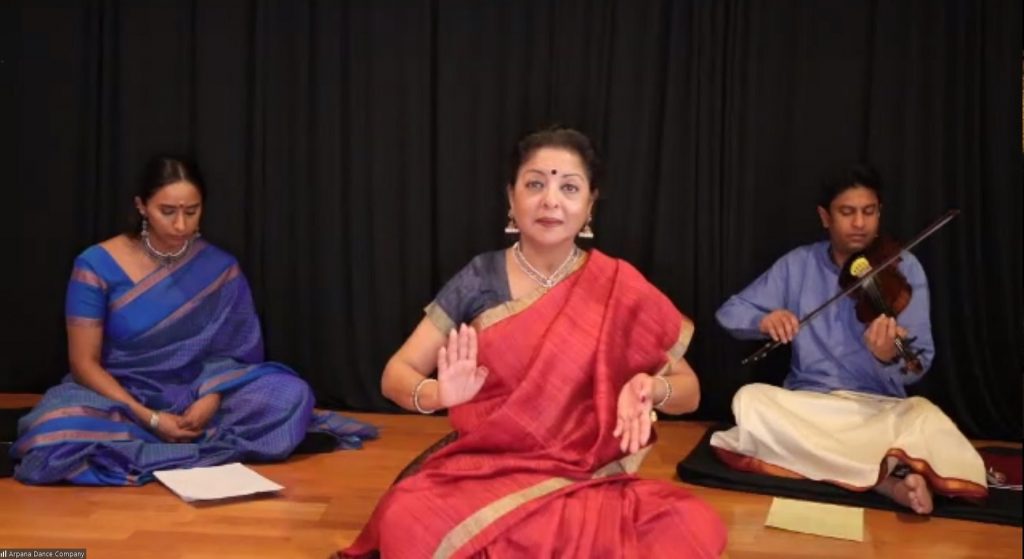
Arpana Dance Company – (L to R) Visalini Sundaram, Ramya Harishankar, Kiran Athreya in “Symphony of Emotions” – Screenshot by LADC
The last work of the evening was titled Nee matale – Javali in Telugu by Pattabhiramayya (19th century), Ragam – Purvikalyani/Talam – Adi. Here Sundaram’s vocal accents aided Harishankar to rebuke a suitor who had promised a wealth of jewelry but alas, delivered nothing. Via Harishankar’s expressions, one learned that it was not just jewelry that this man lacked, but moral substance throughout.
I am only recently becoming knowledgeable of this incredible art form known as Bharatanatyam, so for me watching Harishankar up close on Zoom helped me better understand the years of training that it took her to master the physical movements, as well as the acting that comes directly from her soul – not her head. I look forward to learning more about Bharatanatyam, Ramya Harishankar and her company Arpana Dance Company.
If you see that this beautiful artist and her company are performing near you, do not wait to buy tickets.
#####
To learn more about Ramya Harishankar and Arpana Dance Company, please visit their WEBSITE.
To learn more about Dhvani Performing Arts Society of Central Ohio, please visit their WEBSITE.
Written by Jeff Slayton for LA Dance Chronicle.
Featured image: (L to R) Visalini Sundaram, Ramya Harishankar, and Kiran Athreya – Symphony of Emotions – Photo courtesy of by Dhvani Performing Arts Society of Central Ohio.

